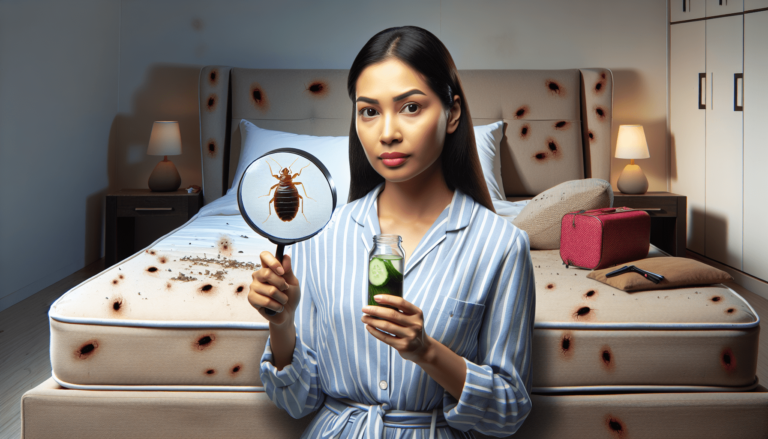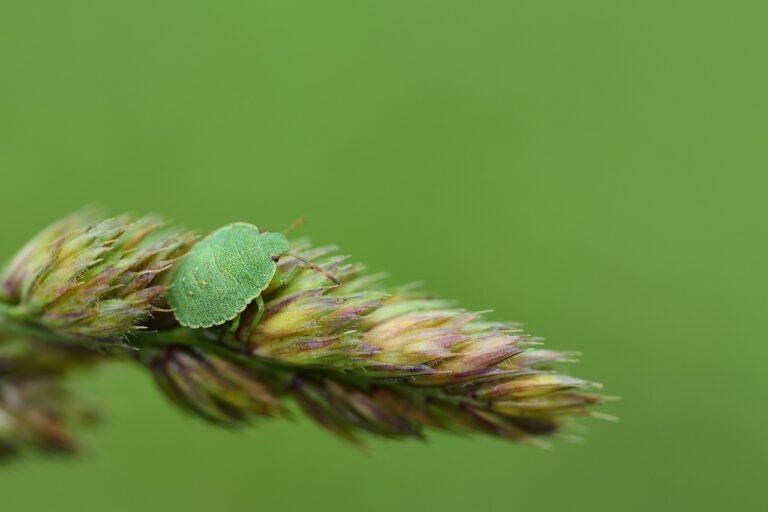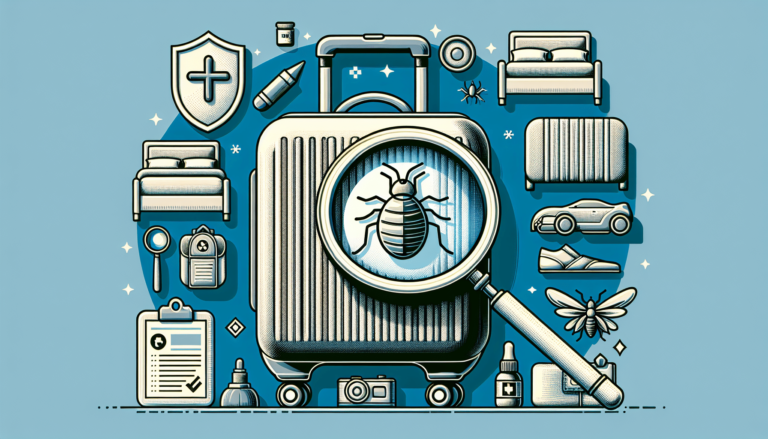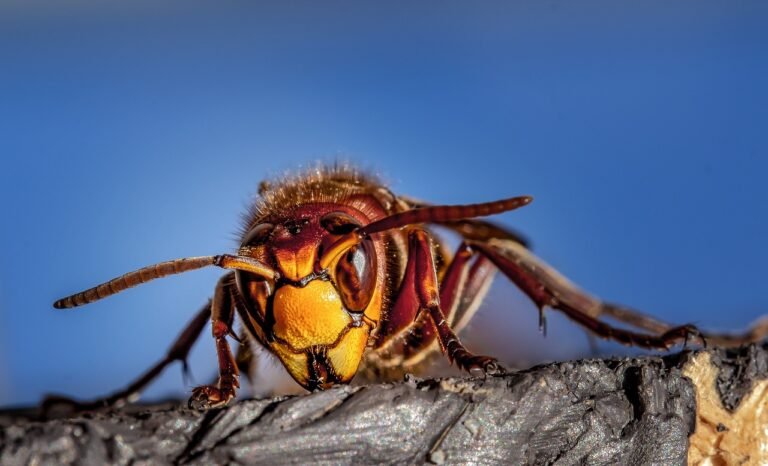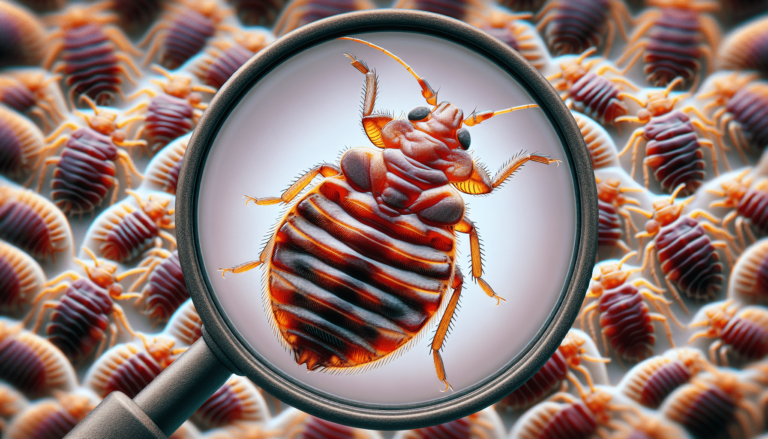What Are the Colors of Bed Bugs?
Have you ever wondered what colors bed bugs come in? Bed bugs are small, blood-sucking insects that infest homes, hotels, and other places where people sleep. The color of bed bugs can vary, but the most common species, known as Cimex lectularius, is typically reddish-brown in color. However, bed bugs can also appear translucent when they have recently molted or are young nymphs. In this article, we will explore the different colors of bed bugs, providing insight into their appearance, behavior, and how to identify and deal with these unwelcome pests. Whether you are a homeowner, traveler, or simply curious about these resilient insects, this article will provide valuable information on the colors of bed bugs and tips on preventing and treating infestations.
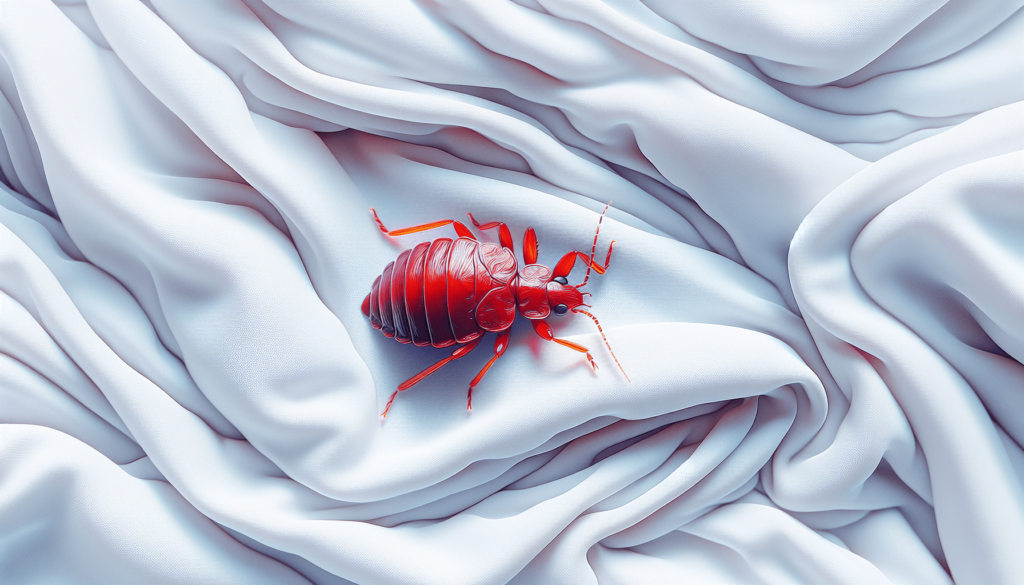
Understanding Bed Bugs
Bed bugs are small, oval-shaped insects that are known for feeding on the blood of humans and animals while they sleep. They are parasitic creatures that have become a common problem in many parts of the world. In this article, we will explore the various aspects of bed bugs, including their habits, lifecycles, and the places where they are commonly found. By understanding these factors, you will be better equipped to deal with bed bug infestations and prevent future occurrences.
Discovering What Bed Bugs Are
Bed bugs belong to the Cimicidae family of insects, which includes more than 90 species. The most common species that infest human habitats is known as Cimex lectularius. These small and wingless insects are about the size of an apple seed, with a flat body and a reddish-brown color. They are nocturnal creatures that are attracted to the warmth and carbon dioxide emitted by humans. During the day, they hide in cracks and crevices near their feeding sources, such as mattresses, furniture, and wall voids.
Recognizing the Habits and Lifecycles of Bed Bugs
Understanding the habits and lifecycles of bed bugs is crucial in successfully identifying and eliminating these pests. Bed bugs have a distinct pattern of behavior, feeding primarily at night while their hosts are asleep. They are attracted to the warmth and presence of carbon dioxide, which helps them locate their hosts. After feeding, they return to their hiding places and digest the blood meal before mating and laying eggs.
The lifecycle of a bed bug consists of several stages: egg, nymph, and adult. Female bed bugs can lay hundreds of eggs in their lifetime, which are typically deposited in small cracks and crevices. The eggs are tiny, translucent, and difficult to spot with the naked eye. After hatching, nymphs go through several molts before reaching adulthood. Each nymph stage is marked by a distinct coloration, which we will explore in detail later in this article.
Identifying Places Where Bed Bugs are Commonly Found
Bed bugs can infest a wide range of locations, but they are most commonly found in areas where people sleep or spend prolonged periods of time. This includes homes, hotels, dormitories, hospitals, and even public transportation vehicles. Within these locations, bed bugs can be found in various hiding spots, such as mattresses, box springs, bed frames, furniture, upholstery, and cracks in walls or floors. It is important to thoroughly inspect these areas if you suspect a bed bug infestation.
Another common hiding place for bed bugs is luggage, bags, and clothing. They can easily hitch a ride on these items and spread to new locations. Therefore, it is important to be cautious when traveling and to check your belongings for any signs of bed bugs before bringing them into your home.
Typical Colors of Bed Bugs
Understanding the typical colors of bed bugs at different stages of their life cycle is essential for effective identification and control measures. The color of bed bugs can vary depending on their feeding status and stage of development. In the following sections, we will explore the colors of bed bugs before and after feeding, as well as the color changes they undergo as they mature from eggs to adults.
The Color of Bed Bugs Before and After Feeding
Before feeding, bed bugs typically have a light brown or tan coloration. However, after feeding on blood, they become engorged and their color changes to a darker reddish-brown. This is due to the blood digesting and filling their abdomens. The color change is more noticeable in adult bed bugs, whereas nymphs may appear just slightly darker after feeding.
Color Changes as Bed Bugs Develop from Eggs to Adults
The color of bed bugs can also change as they progress through their lifecycle. Bed bug eggs are usually whitish-translucent in color, making them difficult to spot. As they hatch and develop into nymphs, their color darkens to a pale yellow or straw color.
As nymphs molt and grow larger, they shed their exoskeletons and their color becomes more pronounced. The nymphs’ color changes from a pale yellow to a translucent or light tan color. Finally, when they reach adulthood, bed bugs develop a reddish-brown color.
These color changes throughout the bed bug’s lifecycle are important for identification purposes and can help distinguish them from other insects.
Genetic Factors Influencing the Color of Bed Bugs
The color of bed bugs is not solely determined by their feeding status and developmental stage. Genetic factors also play a significant role in determining the coloration of individual bed bugs. In this section, we will explore how genetics influence the color of bed bugs and the impact of different gene mutations on their color.
How Genetics Play a Role in Bed Bugs Color
The color of bed bugs is determined by the presence and interaction of various genes. These genes regulate the production of pigments and the development of color patterns on the bed bug’s exoskeleton. Genetic variations can result in different color variations within a bed bug population.
Impact of Different Gene Mutations on Bed Bugs Color
Gene mutations can also play a role in the coloration of bed bugs. Mutations can cause changes in pigment production or distribution, resulting in variations in color. For example, a mutation may result in bed bugs with lighter or darker coloration than the typical reddish-brown. These genetic variations can sometimes make it more challenging to identify bed bugs, as their color may deviate from the expected norm.
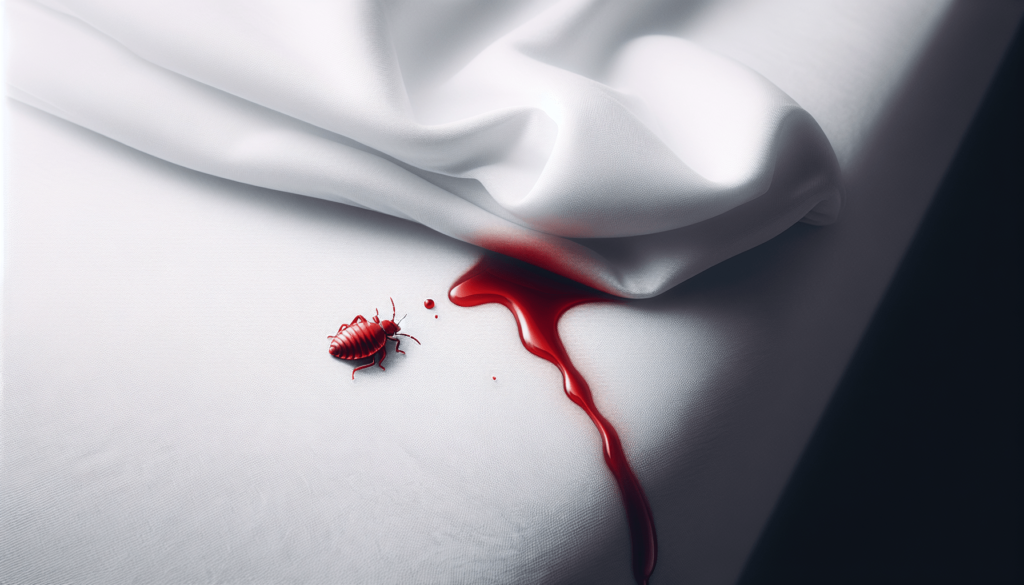
Bed Bugs Colors at Different Stages of Their Life
The color of bed bugs varies depending on their stage of development, from nymphs to adults. In this section, we will explore the colors of bed bugs at different stages and the changes that occur after feeding.
Colors of Bed Bugs at Nymph Stage
Nymphs are the juvenile stage of bed bugs and go through several molts before reaching adulthood. Initially, nymphs have a pale yellow or straw color, which becomes darker and more pronounced with each molt. As they grow larger, they develop a more translucent or light tan color. These color variations are important for distinguishing nymphs from adults.
Colors of Bed Bugs at Adult Stage
Adult bed bugs have a distinct reddish-brown color, which is more pronounced in fully engorged bed bugs that have recently fed. Their exoskeletons have a shiny appearance, and their bodies are flattened and oval-shaped. The reddish-brown color is a useful characteristic for identifying adult bed bugs.
Changes in Color After Feeding at Different Life Stages
After feeding, both nymphs and adults experience a color change. The engorgement of blood causes the bed bugs to become darker in color, transitioning from a pale yellow or light tan to a darker reddish-brown. This color change is more noticeable in adult bed bugs, while nymphs may only show a slight darkening after feeding. The duration of the color change varies, typically lasting for a few days before gradually fading back to the original color.
Effect of Feeding on the Color of Bed Bugs
Feeding plays a significant role in the coloration of bed bugs. In this section, we will explore how bed bugs change color after feeding and the duration of the color change.
How Bed Bugs Change Color After Feeding
When bed bugs feed on blood, they become engorged, and their bodies expand. This expansion causes the exoskeleton to stretch and become darker in color. As a result, bed bugs change from their original light brown or tan color to a darker reddish-brown. The color change is most noticeable in adult bed bugs due to the larger increase in size.
How Long the Color Change Lasts After Feeding
The color change in bed bugs after feeding is temporary and gradually fades over time. In fully engorged bed bugs, the color change may last for several days before starting to fade. As the blood is digested and the bed bug returns to its normal size, the exoskeleton begins to lighten in color. Within a week or so, the bed bug will typically revert back to its original color.
How Environment Affects the Color of Bed Bugs
The environment in which bed bugs reside can also have an impact on their coloration. Factors such as temperature, humidity, and presence of host organisms can influence the color of bed bugs. Let’s explore how surrounding conditions can affect the color of bed bugs and the changes that occur in different climates.
Impact of Surrounding Conditions on Color of Bed Bugs
Temperature and humidity levels can have an influence on the coloration of bed bugs. In warmer and more humid environments, bed bugs may exhibit darker coloration due to increased feeding activity and a higher rate of blood digestion. Conversely, in colder and drier environments, bed bugs may have a lighter coloration due to slowed metabolism and feeding.
Changes in Bed Bugs Color in Different Climates
Bed bugs can adapt to different climates, and these adaptations can result in variations in coloration. In warmer climates, bed bugs may have a darker reddish-brown color to better blend in with their surroundings and hide from potential predators. In colder climates, bed bugs may be lighter in color to help them absorb more heat and maintain their body temperature.
Color of Related Species of Bed Bugs
There are several species of bed bugs besides Cimex lectularius that can infest human habitats. In this section, we will discuss how different species of bed bugs can be identified based on their coloration and make comparisons between them.
Identifying Different Species of Bed Bugs By Their Color
Different species of bed bugs can have variations in their coloration, although they generally share similar characteristics. For example, the tropical bed bug (Cimex hemipterus) is known for its lighter color compared to Cimex lectularius. The color variation can be one of the factors used to differentiate between these species.
Comparison of Colors in Different Species of Bed Bugs
When comparing the colors of different species of bed bugs, it is important to note that variations in color can occur within each species. The color of bed bugs can be influenced by genetic factors, environmental conditions, and even geographical locations. Therefore, color alone may not be the sole factor for species identification, but it can provide valuable clues when combined with other identifying characteristics.
Implications of Bed Bugs’ Color on Their Control
The color of bed bugs can have implications on their control and treatment methods. In this section, we will explore how bed bug color can be used to detect infestations and the role of color in the effectiveness of various bed bug treatments.
Using Bed Bug Color to Detect Infestations
The color of bed bugs can be used as an indicator of infestation. Being able to identify the reddish-brown adult bed bugs or the darker nymphs can help confirm the presence of bed bugs in a given area. By regularly inspecting your sleeping areas, furniture, and luggage, you can detect bed bug infestations early and take appropriate measures for control.
Role of Color in Effectiveness of Various Bed Bug Treatments
The color of bed bugs can also play a role in the effectiveness of different treatment methods. For example, heat treatments are often used to control bed bugs, as they can heat the infested area to a temperature that is lethal to the insects. The darker color of engorged bed bugs can make them more susceptible to heat treatment, as darker colors absorb and retain heat more efficiently. However, it is important to note that the effectiveness of treatment methods should not solely rely on color, but rather consider the overall approach to eliminating the infestation.
Frequently Asked Questions About the Color of Bed Bugs
After exploring the various aspects of bed bug coloration, it is common to have questions. In this section, we will address some frequently asked questions about the color of bed bugs.
Why Do Bed Bugs Change Color
Bed bugs change color due to their feeding activity. Before feeding, they have a light brown or tan color, but after feeding on blood, they become engorged and their color changes to a darker reddish-brown. This color change is temporary and gradually fades as the blood is digested.
Why Are Bed Bugs Reddish After Feeding
Bed bugs appear reddish after feeding because their abdomens are filled with blood. The blood digestion process and the expansion of their bodies cause the bed bugs to darken in color. This reddish coloration is more pronounced in fully engorged adult bed bugs.
How to Differentiate Bed Bugs and Other Insects Based on Color
Differentiating bed bugs from other insects based on color alone can be challenging, as many insects can exhibit similar colorations. However, there are some distinguishing features of bed bugs, such as their flat oval-shaped bodies, distinct reddish-brown color (especially after feeding), and the presence of small, dark spots of fecal matter on or near their hiding spots. It is best to consult with a pest control professional or use other identifying characteristics in combination with color to accurately identify bed bugs.
Infographic: Visual Guide to Bed Bugs Colors
Understanding the colors of bed bugs can be easier with the help of visual aids. The infographic provided above serves as a visual guide to the different colors of bed bugs at various stages and how their color changes after feeding. By referring to this infographic, you can enhance your knowledge about bed bug coloration and use it as a tool for detection and control.
Conclusion
In conclusion, understanding the colors of bed bugs is integral to identifying and controlling infestations. Whether it’s recognizing the typical colors of bed bugs at different stages of their life cycle or understanding the impact of genetic factors and environmental conditions on their coloration, this knowledge is essential for effective pest management. By using the information provided in this article, you can enhance your understanding of bed bug coloration and utilize it to detect infestations, select appropriate control measures, and prevent future occurrences.
Insert Quiz Questions Here:
- What is the typical color of bed bugs before feeding?
- How does feeding affect the color of bed bugs?
- What are some common hiding places for bed bugs?
- How can the color of bed bugs help in their identification?
- Why is it important to inspect your belongings for bed bugs when traveling?

